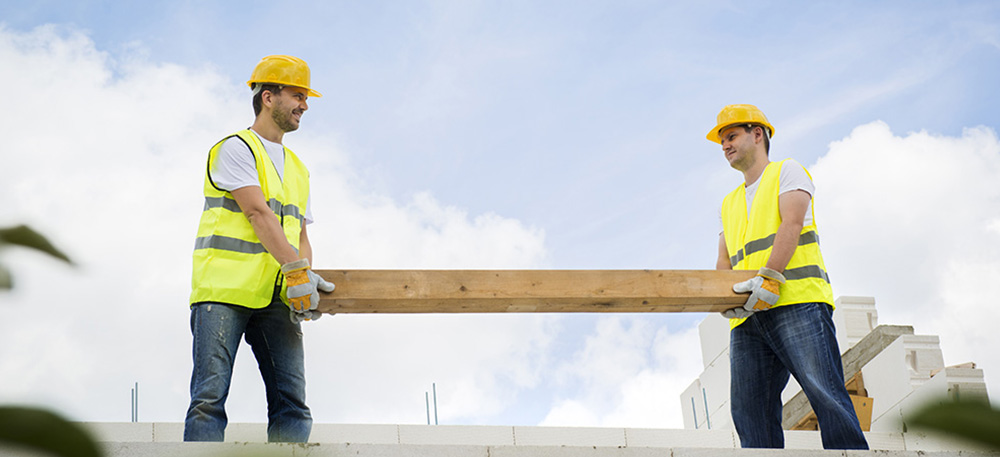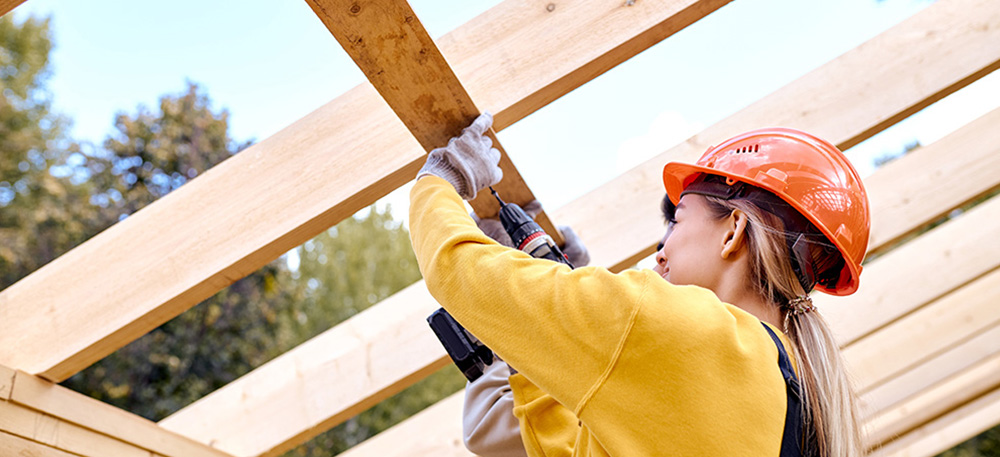In the construction sector, the lifting and moving of heavy loads cannot be avoided. But all too often, these activities lead to physical health problems.
In 2020, no less than 52% of construction workers suffered from back problems.
Our ‘Lifting heavy objects and preventing (back) aches and pains’ course offers employees targeted tips and insights to improve their working method.

Ergonomic strain is one of the most common causes of absenteeism and musculoskeletal disorders among construction workers. Now that Belgian employees are required to work longer, it is important to pay more attention to the physical strain of their job. An integrated prevention policy can reduce the number of employees with back pain by 20%. Therefore, why not teach your employees smart lifting and safe movement in the workplace.
Various studies have shown that there is not one lifting technique that offers the best ergonomic solution for every employee. Smart lifting is more involved than simply applying the “correct standard lifting technique”. Workers generally know the basic principles, but there are a variety of methods and movements that are good for the back.
In addition, the preferred style of lifting is influenced by the curvature of the spine, which is different for each individual. This is why employees use a variety of techniques that they find more comfortable and efficient.
In addition to a taking a personal approach, it is important for employees to gradually get used to specific forms of load and weights. With enough practise, they will build up their strength and condition, which will only be of benefit to their back.

Good working methods are adapted to the working environment and vice versa. Getting workers to work healthily therefore only works if the working environment is also designed as ergonomically as possible. To do this, you start from an ergonomics risk analysis. It identifies the ergonomic risks – around grip, weight, posture, movement, strength, and effort, among others – for each workplace, and links them to the right solutions and preventive measures.
An ergonomic working environment is a crucial starting point. But teaching employees to work ergonomically in it is an indispensable second step. You can do so with our training course ‘Lifting heavy objects and preventing (back) aches and pains’, in which workers learn practical lifting techniques and enjoy personalised posture and exercise tips. This will help them master the least stressful working methods and prevent physical complaints.


In addition to a taking a personal approach, it is important for employees to gradually get used to specific forms of load and weights. With enough practice, they will build up their strength and condition, which will only be of benefit to their back. To best support them in this, SpineWise developed small wearables that measure posture and movement of the spine.
More specifically, workers wear biofeedback sensors during physically demanding tasks to map their body posture. The wearable technology sends vibrating signals when the employee performs an aggravating action, allowing them to make immediate adjustments.
In our “Lifting loads and prevention of (back) complaints” training, participants learn how to apply elementary basic principles and postures in real work situations while paying attention to personal body posture and points for improvement.
Organisations can couple training with individual ‘on the job’ training. Our experts then use the innovative SpineWise wearables to optimise employees’ working methods.
Cookies saved